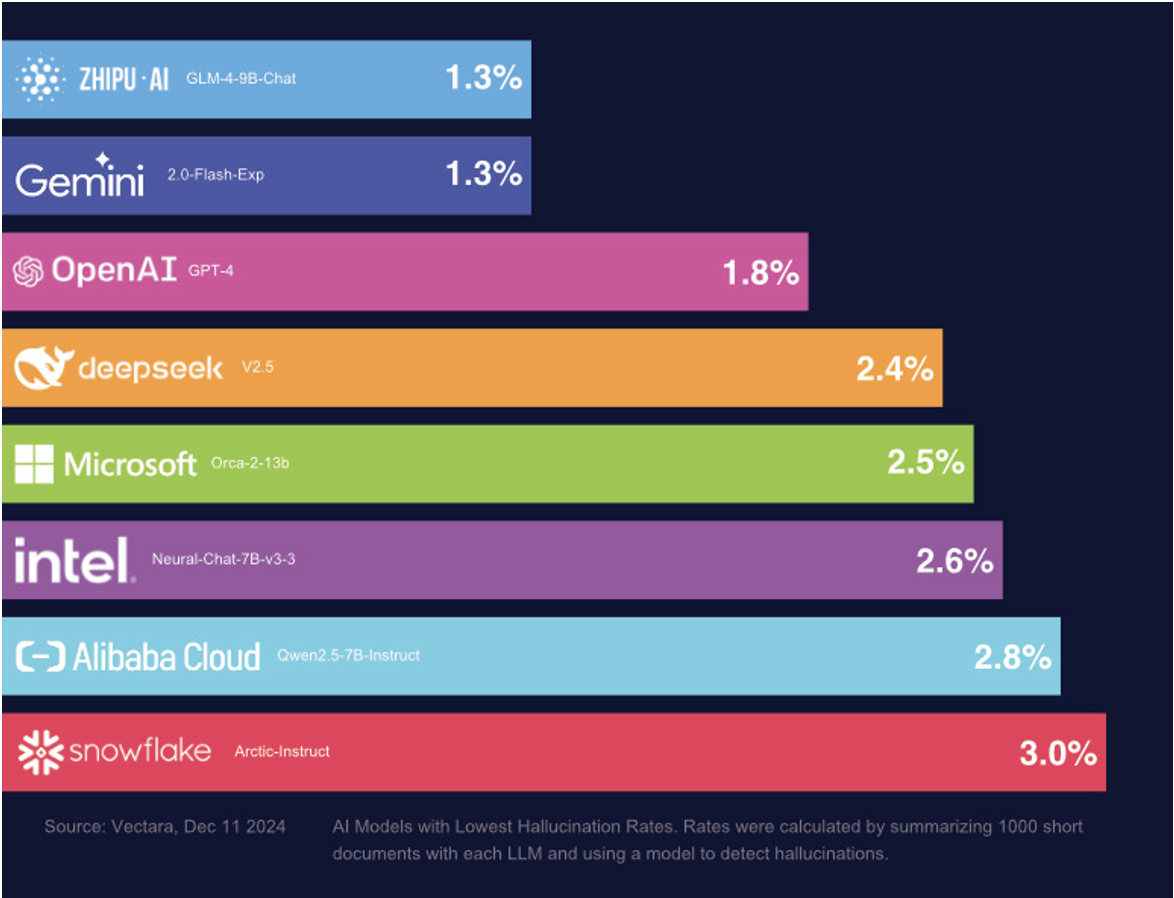
It’s no secret that AI chatbots have a tendency to invent things. That creative spark is part of what makes them so impressive, but it also comes with a downside: they often blur the line between fact and fiction. These models can slip false information into otherwise convincing prose, sounding authoritative even when they’re wrong. Like politicians. Another quietly problematic behavior large language models tend to display is their eagerness to agree with you. On the surface, this seems helpful. Sometimes even pleasant. But when AI systems default to affirmation, they risk becoming sophisticated feedback loops for falsehoods. This test clearly demonstrates it. AI leans leans toward validating a user’s assumptions, even when those assumptions are shaky or flat-out wrong.
To make things even worse, they fake scientific citations. The issue of chatbots generating false scientific citations is widespread. A 2024 analysis found that large language models often fumbled key details like paper titles, lead authors, or publication years, with error rates ranging anywhere from 30% to a staggering 90%, depending on the model.
Most AI tools now include disclaimers urging users to verify anything critical, especially when it comes to research or factual claims. But when people treat AI-generated content as inherently reliable, the consequences can be more than just embarrassing. In 2023, a U.S. attorney named Steven Schwartz made headlines after submitting a legal brief that referenced court cases which didn’t actually exist. It was all fabricated by ChatGPT. It was a cautionary tale about what happens when machine-generated information gets mistaken for truth.
You can’t blame a drill for not being able to cut something
Hallucinations are baked into the very architecture of LLMs. It’s how they work. See, at their core, large language models aren’t built to deliver hard facts. LLMs are built to generate text that sounds plausible based on the statistical patterns they’ve seen during training.
Their output is shaped by the massive datasets they ingest and further refined through methods like human feedback and reinforcement learning. While researchers have a solid grasp of how these models are trained, the internal logic behind their behavior remains largely opaque. Even now, experts admit they don’t fully understand why hallucinations occur or what triggers them in specific prompts. At the heart of the issue is how large language models actually function. They’re built to compress vast amounts of linguistic data, trillions of words, into a much smaller set of parameters that define the internal structure of the model. These parameters act like adjustable dials, shaping how artificial neurons weigh and relate different pieces of information. In doing so, some nuance inevitably gets lost. When the model generates text, it’s essentially unpacking compressed statistical patterns, attempting to recreate language based on probabilities rather than exact memory.
Even with a perfectly accurate data set, AI will still hallucinate at some rate. Obviously, this isn’t a dealbreaker for every user or every use case. If you’re talking to an AI companion on a platform like Candy AI, where LLM is doing the heavy lifting behind the scenes, a little hallucination isn’t the end of the world. In fact, those moments of creative drift might actually make the interaction more entertaining, even more human. When the goal isn’t precision but personality, it may even be a good thing.
Another type of mistake crops up when users feed incorrect information directly into their prompts. Since AI chatbots are trained to keep the conversation flowing and contextually coherent, they often accept the user’s premise without question.
How to minimize AI hallucinations
Bad news is – you can’t completely avoid hallucinations. The good news? You can minimize it. One widely used strategy to reduce hallucinations in AI outputs is retrieval-augmented generation (RAG), which involves grounding a model’s responses in a curated, trusted dataset. Instead of relying solely on internal parameters, a RAG-based system fetches information from external sources, typically documents vetted for accuracy, before generating an answer.
Another approach involves external validation, using a separate system to fact-check an AI’s response in real time, often by comparing it to search results from the web. Google’s Gemini, for example, includes a “double-check” feature that color-codes parts of its output: green for verified claims, brown for content that may be questionable. While helpful, this kind of live cross-referencing is computationally intensive and introduces delays. And it’s not foolproof because if the source material is flawed, the fact-checking system will be too.
Another technique for managing hallucinations focuses on probing the internal reasoning process of a chatbot. One method involves having the model engage in conversations with itself, with other models, or with human users who ask follow-up questions designed to test consistency. These “self-dialogue” or “debate” techniques essentially turn the model into its own auditor. Instead of generating a single answer and stopping there, the model is prompted to double-check itself, or to reason through a chain of logic step by step. Sometimes this can reduce hallucinations, especially when combined with techniques like chain-of-thought prompting, where the model is encouraged to “think out loud” before settling on an answer. But like many solutions in AI, this too has limitations. A confident wrong answer, explained step-by-step, is still wrong.
Avoid the confidence trap and affirmation
What’s interesting, and occasionally unsettling, is how persuasive AI can be, even when it’s spouting nonsense. The confidence embedded in the tone of AI responses gives them a veneer of reliability, and it’s that tone, not the content, that people often respond to. In psychological terms, it’s a trust trap. The AI sounds sure, so we assume it is sure. And if it’s sure, then it must be correct. This is especially dangerous in high-stakes domains like medicine, law, or scientific research, where a hallucinated fact can ripple outwards into real-world harm.
What about affirmation? Well, fact-checking sensitive information and refusing to take AI responses at face value is already a strong start. It puts you ahead of most users and helps reduce the risk of relying on fabricated or misleading answers. But there’s another subtle issue that often slips under the radar: the model’s built-in tendency to agree with you. Large language models are trained to be helpful and polite, which results in them being too helpful. This phenomenon, known as affirmation bias, is especially dangerous when you’re testing an idea, verifying a fact, or trying to explore a topic objectively. To counter this, it’s helpful to explicitly instruct the AI not to assume your input is correct. Use prompts like “Only agree with me if the statement can be verified with high confidence.” These kinds of instructions help shift the model into a more cautious, analytical mode, less eager to please, more likely to weigh possibilities. It won’t eliminate bias or hallucinations entirely, but it significantly lowers the chance of the model becoming a feedback loop for incorrect ideas.
Think of it this way: the default behavior of most LLMs is to keep the conversation going smoothly, not to tell you you’re wrong. If you want real insight, you sometimes need to break that rhythm and give the model permission to disagree. Picture a chatbot that can raise its hand and admit, “I’m guessing here.” That would be a game-changer. Yet teaching it to recognize the limits of its own training, and decide what to do when a prompt clashes with its stored patterns is trickier than it sounds. Large language models don’t enjoy flawless memory, sometimes they mix things up, just like people do.
As more chatbots hit the market, their personalities will likely diverge. Some will cling so tightly to verified facts that every exchange feels like reading a technical manual. Others will riff so freely that users quickly learn to treat their answers as entertainment, not guidance.
For straightforward facts, stick to traditional search engines. That is, until something better comes out.



